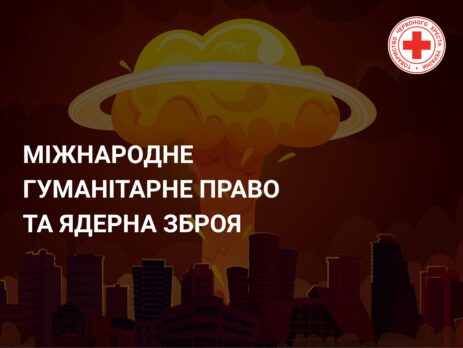International Humanitarian Law and Nuclear Weapons: Risks from Deployment and Consequences of Use
In the modern world, nuclear weapons are regarded as the most powerful form of mass destruction. The effects of a nuclear explosion encompass a range of factors, including shockwaves, intense light radiation, penetrating radiation, radioactive contamination, and an electromagnetic pulse. The use of nuclear weapons has catastrophic consequences — from mass civilian casualties to long-term humanitarian and environmental disasters. For this reason, every state that is a party to the Treaty on the Non-Proliferation of Nuclear Weapons (NPT) must also comply with international humanitarian law (IHL), which governs the protection of victims of war and restricts the means and methods of warfare.
International Treaties Governing the Use of Nuclear Weapons
Most countries around the world, including all member states of the European Union, are parties to the NPT, which was adopted by the UN General Assembly and opened for signature on 1 July 1968. In addition to the treaty, the use of nuclear weapons is subject to the rules of international humanitarian law, which are derived from international treaties and customary norms of IHL.
International humanitarian law requires all parties to an armed conflict to adhere to fundamental principles of warfare, including:
- The principle of distinction between civilians and combatants.
- The principle of the prohibition of indiscriminate attacks.
- The principle of proportionality – ensuring that military advantage is not outweighed by excessive harm to civilians.
- The principle of precautions in attack – to minimise harm to civilians and civilian objects.
Thus, in accordance with the principle of military necessity under international humanitarian law (IHL), even the threat or deployment of nuclear weapons must be justified solely by the legitimate defence needs of a state. At the same time, the direct use of nuclear weapons contradicts the norms of IHL, as it represents a force that is extremely difficult to control in terms of the scale and scope of destruction.
Humanitarian Consequences of the Use of Nuclear Weapons
The use of nuclear weapons poses inherent risks of mass destruction and large-scale civilian casualties. In addition to the immediate impact, many survivors may later die from radiation sickness or cancer. It is also important to note that in the event of a nuclear explosion, delivering humanitarian aid becomes an exceptionally difficult task due to the unsafe conditions and infrastructure damage.
Environmental Consequences of the Deployment and Use of Nuclear Weapons
The deployment of such weapons carries significant environmental risks, even in the absence of their use. The ongoing maintenance of nuclear warheads involves handling radioactive materials, which creates a constant, albeit small, risk of accidents in the event of a safety protocol breach. In the case of an actual detonation, a nuclear explosion would result in a catastrophic environmental disaster with long-term consequences for ecosystems and human health.
The Ukrainian Red Cross continues to raise public awareness about the norms of international humanitarian law and the importance of their observance, as violations of IHL can lead to devastating consequences.

